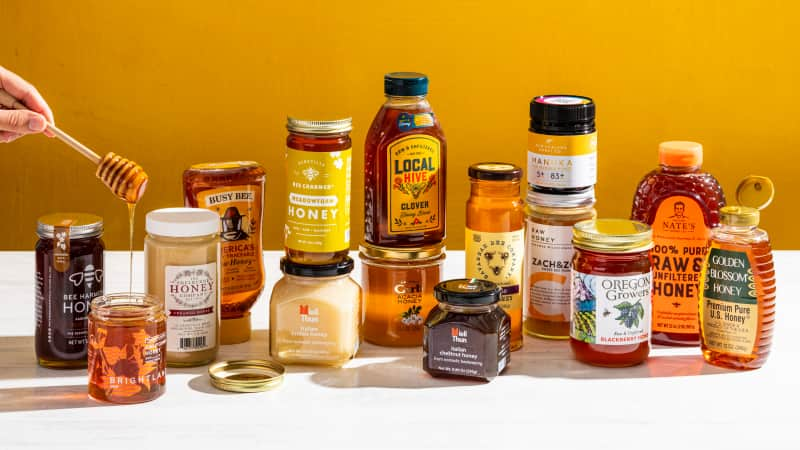The Best Syrup/Honey Dispensers
Equipment Review
We tasted a broad array of honey from all over the world: from Oregon’s meadowfoam and Florida’s tupelo to New Zealand’s mānuka and California’s orange blossom. Here are 15 honeys that offer far more than just sweetness.
Published Sept. 1, 2023.

This delicious, golden, syrupy sweetener has been used as food and medicine in cultures around the world since it was first foraged more than 8,000 years ago. Today, honey is harvested worldwide by big corporations, your neighbors, and countless specialty producers. It can sweeten your tea, enhance both the flavor and consistency of your barbecue sauce, and bring out nuances in a hunk of blue cheese.
Most of us are familiar with the bear-shaped jars of honey, and you might even have one in your pantry right now. But there’s so much more to honey than that simple, sweet syrup. At its best, honey contains nuanced aromas and flavors. It can taste floral, bitter, acidic, sweet, and even have notes of menthol or tobacco. Like wine, olive oil, and oysters, honey’s flavor and aroma are impacted by its terroir. You get very different results based on where the honeybees live and work, including the honeybees’ diet, the time of the year the honey is harvested, and how it’s processed. Honey ranges in color from very pale yellow to dark amber. It can be thin and liquidy, thick and creamy, dense and viscous, or anywhere in between.
Bees are industrious, intelligent, and collaborative insects. Forager bees fly miles a day gathering nectar from flowers and storing it in their second stomachs, called honey sacs. While collecting nectar, they also pick up pollen, which sticks to their hairy bodies. (This is how many plants reproduce, and why bees are essential to their life cycle.) The enzyme invertase, which is present in the bees’ honey sac, begins to break down the nectar. When they return to the hive they pass the nectar to worker bees who chew the honey, adding more enzymes, until the nectar is completely broken down.
The bees deposit the nectar into the hive’s honeycomb and use their wings to rapidly fan the honey until enough water has evaporated. During this process, the nectar transforms from a solution containing 80 percent water to honey, which contains 18 percent water or less. Once the honey has sufficiently dehydrated, the bees cap the honeycomb with beeswax, creating an airtight seal. This transformation results in the thick, luscious honey we know and love. The beekeepers leave the honey to ripen and mature, and eventually break the beeswax coating to release the honey from the honeycombs.
Honey producers make a series of processing decisions that affect their honeys’ aroma, flavor, and consistency. Some producers value keeping their honey as raw and natural as possible, bringing it directly from the beehive to the jar without much intervention. Howeve...
The mission of America’s Test Kitchen Reviews is to find the best equipment and ingredients for the home cook through rigorous, hands-on testing.

Carolyn is a senior editor for ATK Reviews. She's a French-trained professional baker.

This is a members' feature.